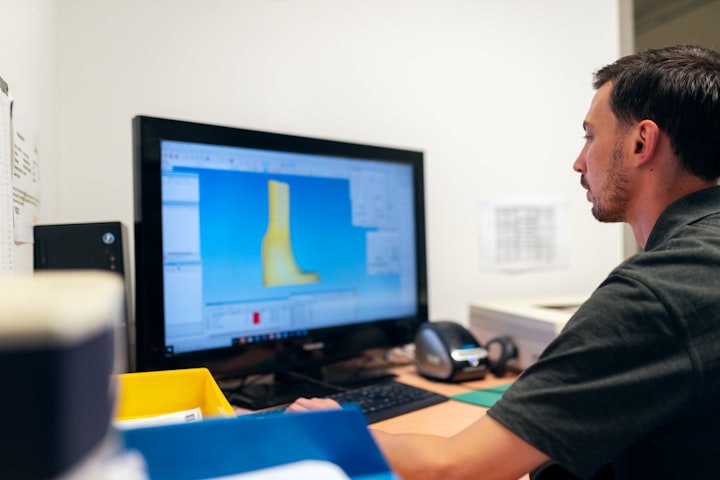
At WMDTECH, we understand the paramount importance of aerospace safety and the critical role it plays in the aviation industry. Aircraft components undergo rigorous inspections to ensure they meet the highest standards of precision and reliability. One of the key technologies that have revolutionized the way we inspect critical aerospace components is X-ray tools. In this article, we delve into the world of X-ray tools, how they enhance aerospace safety, and why they are essential for the aviation industry.
The Need for Precise Component Inspections
Safety in the aerospace industry is non-negotiable. The structural integrity and performance of aircraft components directly impact the safety of passengers and crew. Traditional inspection methods often fall short in detecting hidden flaws and defects within the components. X-ray technology comes to the rescue, providing a non-destructive evaluation method that can reveal internal structures without damaging the component.
Understanding X-ray Technology
X-ray technology is based on the principle of electromagnetic radiation. When X-rays pass through an object, some are absorbed, and others pass through, forming an image that represents the varying densities of the material. This capability allows us to visualize intricate details within the aerospace components, identifying defects such as cracks, voids, and inclusions that might otherwise go unnoticed.
X-ray for Aerospace Component Inspection
1. Non-Destructive Testing (NDT)
X-ray inspection is a critical non-destructive testing method used in the aerospace industry. NDT enables us to evaluate the structural integrity of components without causing any damage. This is crucial, as the components can be examined thoroughly without compromising their usability.
2. Defect Detection
X-ray tools are highly sensitive and can detect even the tiniest defects in aerospace components. Cracks and material irregularities, which may not be visible to the naked eye, are easily identified through X-ray imaging. Early detection of such defects prevents catastrophic failures, ensuring the safety of aircraft in operation.
3. Material Analysis
X-ray analysis not only helps in identifying defects but also aids in material analysis. Engineers can determine the exact material composition and verify if it aligns with the required specifications. This is vital, as it ensures that the materials used in aerospace components are of the highest quality and meet stringent industry standards.
4. 3D Imaging
Advancements in X-ray technology have led to the development of 3D imaging capabilities. This means we can now inspect aerospace components from various angles and obtain a comprehensive view of their internal structures. 3D imaging enhances inspection accuracy and ensures that no critical details are overlooked.
Ensuring Precision and Reliability
Aerospace components demand precision engineering and manufacturing. Any compromise in quality can have severe consequences. X-ray tools play a pivotal role in ensuring that each component meets the required standards. The use of X-ray technology guarantees:
1. Improved Quality Control
X-ray inspections are integral to the quality control process in the aerospace industry. By identifying defects and deviations early on, manufacturers can take corrective actions, maintaining consistent quality and reliability across all components.
2. Optimized Maintenance
For aircraft already in operation, regular inspections are necessary to monitor their health and safety. X-ray technology allows for efficient and accurate maintenance inspections, minimizing downtime and enhancing the overall reliability of the aircraft.
3. Cost Savings
Preventing component failures before they occur not only enhances safety but also leads to significant cost savings. X-ray inspections help avoid expensive repairs and replacements, which can otherwise result from undetected defects.
Integration of X-ray Tools in Aerospace Industry
The aerospace industry has embraced X-ray technology due to its numerous benefits. The X-ray inspection process has become an integral part of the aerospace manufacturing and maintenance workflow. To ensure seamless integration, several key factors are considered:
1. Regulatory Compliance
The aviation industry is heavily regulated to maintain the highest safety standards. X-ray inspection procedures must comply with relevant regulations and standards, ensuring that the results are accurate and reliable.
2. Training and Expertise
Qualified personnel with expertise in X-ray inspection are essential for its successful implementation. Adequate training ensures that technicians can operate the equipment proficiently and interpret the X-ray images accurately.
3. Equipment Calibration and Maintenance
X-ray machines must be regularly calibrated and maintained to ensure consistent and reliable results. This requires a robust maintenance program to avoid any performance discrepancies.
Conclusion
In conclusion, X-ray tools have revolutionized aerospace safety by providing a non-destructive and precise method of inspecting critical components. The ability to detect defects and irregularities before they escalate ensures the highest level of safety for passengers and aircraft. The aerospace industry continues to benefit from the integration of X-ray technology in manufacturing, maintenance, and quality control processes.





Comments
There are no comments for this story
Be the first to respond and start the conversation.